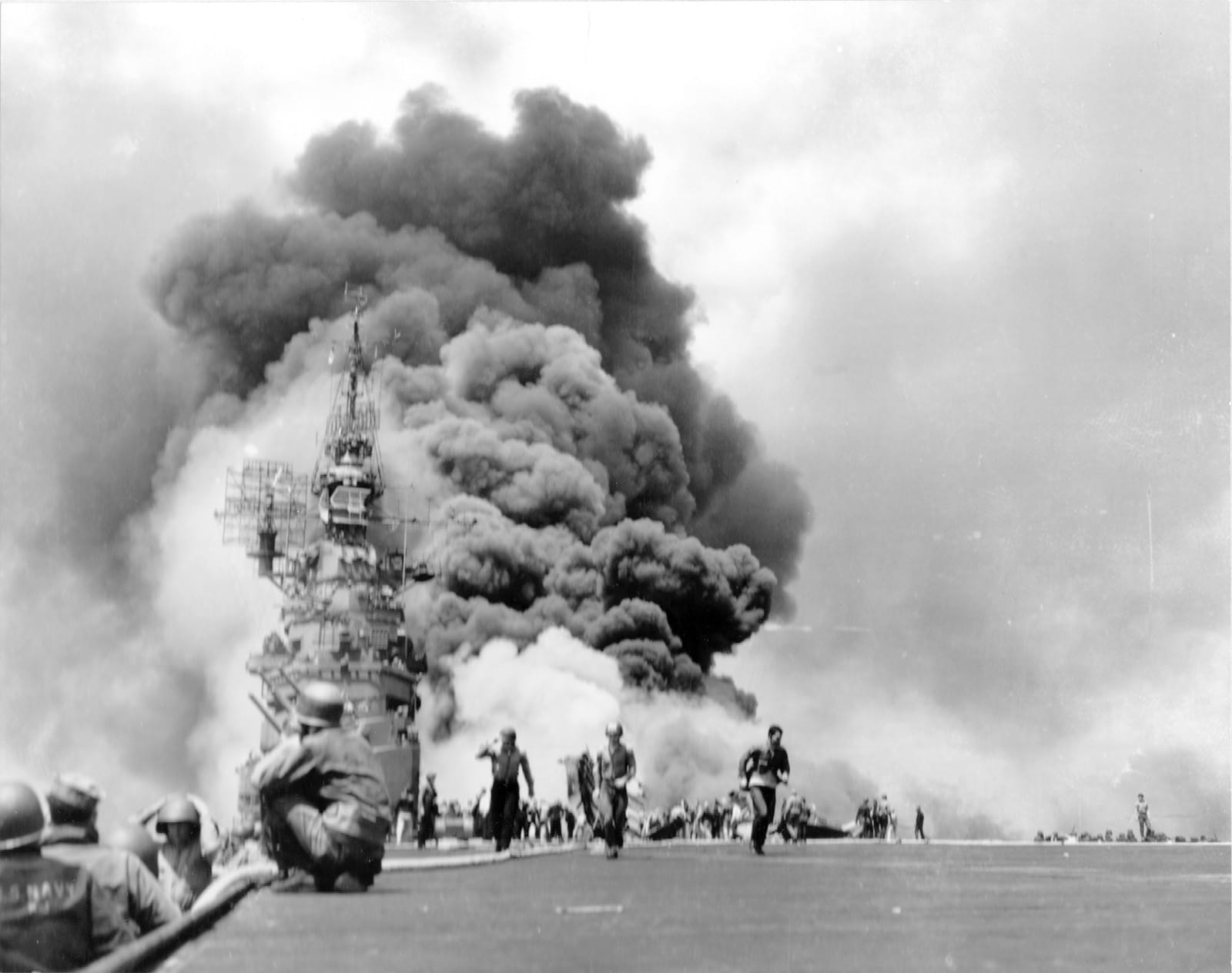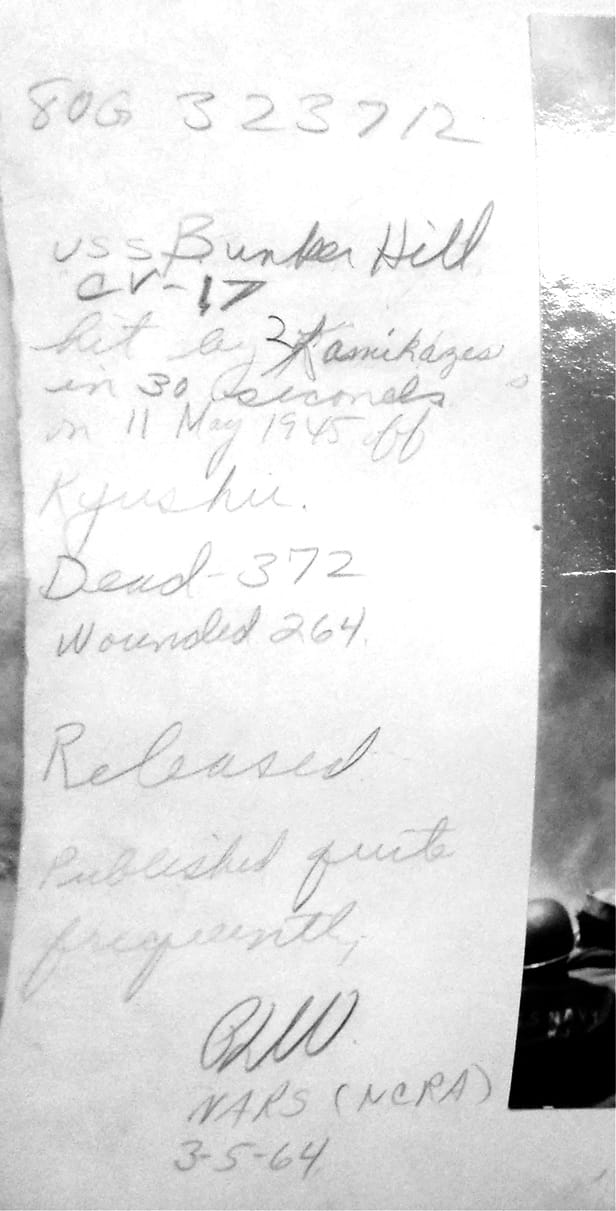Floating Chrysanthemums

4-30-16
On April 6, 1945, the Imperial Japanese Navy launched the first of ten massive air attacks – featuring kamikaze planes – against Allied ships (yes, the British Navy did have a small task group of their ships as part of Task Force 58 and 38 at the very end of the War) off the coast of Okinawa. 524 planes attacked. Sixteen ships were heavily damaged; Destroyers Bush and Colhoun were sunk.
April 12 saw the second kikusui: 478 planes attacked and damaged the carrier Enterprise, and battleship Missouri. Destroyer Mannert L. Abele was split in half and sunk by a kamikaze piloted V2 rocket (“Ohka”) that hurtled in on the ship at speeds exceeding 500 miles per hour.
Kikusui 3 on April 16 unleashed 507 planes against our ships, damaging the carrier Intrepid, the battleship Missouri (again) and sinking destroyer Pringle.
From April 21 to 29, Operation Kikusui 4, consisting of 856 planes, damaged many ships: minelayers, destroyers, and the clearly marked hospital ship USS Comfort.
On May 3, Operation Kikusi 5 began, unleashing 449 planes. In the mayhem that followed, many minelayers, minesweepers, destroyer escorts and LSM’s were attacked and damaged or sunk. Destroyers Little and Morrison were sunk, Ingraham was badly damaged. On May 4, the light cruiser Birmingham, previously damaged in the Battle for Leyte Gulf, took a kamikaze hit in the forward gun turrets. Losses: 50+ sailors killed, more than 80 injured. The escort carrier Sagamon was hit: 11 dead and more than 30 injured. British carriers HMS Indomitable and HMS Formidable were both hit; Formidable losing 8 men and another 47 injured.
Kikusui 6, (345 planes), began on May 11. On that day, the carrier Bunker Hill, fleet commander Admiral Marc Mitscher’s flagship was hit:

The plane crashed into the flight deck, which was loaded with gassed-up planes ready to take off. Seconds later, another kamikaze slammed into the flight deck next to the island, releasing its bomb below decks. Massive fires took the lives of 389 men and seriously wounded another 264. The Admiral was not wounded, but he lost fourteen staff members. He was forced to move his flag to the carrier Enterprise. She was so heavily damaged she was towed off to Bremerton WA for repairs and never made it back to the War. On May 14, Admiral Mitscher’s new flagship, the Enterprise, was slammed into by a kamikaze at the forward elevator. A spectacular explosion blew the elevator several hundred feet into the air, killing 14 men and wounding 67 more. Mitscher’s second home in three days was also towed off to Bremerton for repairs. He was forced to move his flag to yet another carrier, the USS Franklin, just recently repaired from a kamikaze attack while she lay at anchor in Ulthi two months earlier on March 11th.
Sources: Wikipedia, A Bird’s Eye View of Heavy Cruiser USS Boston and Task Force 58 in Combat Operations Against the Empire of Japan (S Kelly)

The amazing photo was among the amazing photos in the CA-69 folders at the National Archives, retrieved by Bill Kelly and with the help of Rivka Kelly.
steve